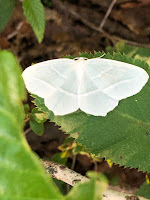One of the great things about a break is the down time to reflect and plan. I really haven't done either. I did one article review and my brain is not engaging fully. Still, I need to plan.
Teaching
This spring I'll be teaching BIO 347 Biostatistics and Experimental Design and BIO 298 Economics of Conservation with a colleague from the Poli Sci department. As of now we're scheduled to teach in person but COVID rates are higher than they were in spring. Although vaccines have been approved I don't see widespread vaccine availability until mid-Spring. Just a guess though. One student in Biostats has requested remote teaching so I'll be recording lectures - live or otherwise. Live recordings ("synchronous") are easy because the camera is just recording me talking and I use my notes that are all ready to go. Asynchronous recordings require much more time - usually about 5 hours of work for 50 minutes of lecture time.
I'd also like to teach Field Zoology this summer but I'm skeptical it could happen. I haven't thought about it that much. Probably should soon. Also, I'd like to change it to Wildlife Techniques.
The fall semester is still up in the air. I will possibly teach Ecology. If not, I think Archosaurs again.
Research
This spring I need to focus on DNA barcoding insects. It's gone horribly slow and it just comes down to following directions. We are also sorting insects from this summer's pollinator pan experiment.
This summer I need to survey birds in burned and unburned sites on gamelands. If I can have students we'll work at the same sites and catch bugs, birds, and mammals to work out food webs. I'll need to renew a zillion permits. My least favorite thing to work on.
I'd like to keep with the pollinator study. I started the pollinator project last August and it went exceedingly well. This coming summer I'll add a blue and white plate to the yellow plate I was putting out. Hopefully, by next summer I'll have better wasp ID skills and the barcoding will be down pat.
Publishing
Clay caterpillar paper is in review. This has four or five students on it (all graduated). This was rejected the first time around and now resubmitted.
I have Ph.D. data I could try to publish on urbanization and birds. I have a ton of post doc data on bluebirds across an urban gradient. Those data are 15 years old. I have the pollinator data we're working on now - that won't be ready for weeks or a few months. There's the prescribed burning data - if anything that needs serious organizing.
Then there's the Wilson Ornithological Society. I'm the chair of the conservation committee and we've been struggling to come up with some initiatives. It looks like most of us want to publish. But what do we publish? Threats to birds? I think I'll put coffee growing forward as a topic and see if this gets some support.



















































